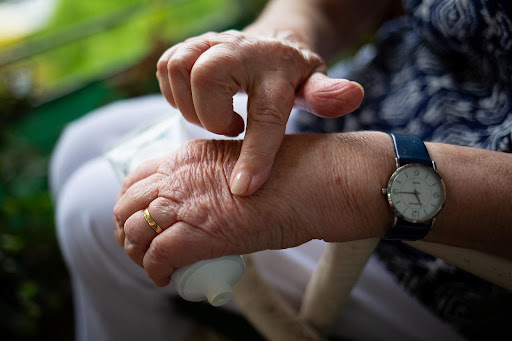According to the Centers for Disease Control and Prevention (CDC), 1 in 4 adults in the U.S. suffers from arthritis or inflammation of the joints. Arthritis pain affects approximately 58.5 million Americans and is especially prevalent in older individuals.
Winter weather can exacerbate the pain associated with the condition and affect individuals’ quality of life. While there’s no cure for the disease, there are ways you can deal with it. In this article, we will discuss pain management for arthritis and tips on relieving arthritis discomfort during the fall and winter months.
Does Cold Weather Affect Arthritis Pain?
Whether it’s osteoarthritis or rheumatoid arthritis, many studies have established a correlation between different types of arthritis and change in weather. This includes research on relative humidity and barometric pressure affecting osteoarthritis and decreasing temperature being linked to increased arthritis pain.
Managing Arthritis Pain in Cold Weather
While cold weather can worsen pain and discomfort, there are ways to deal with it. Here are some useful tips on managing arthritis-related pain in the colder months.
Keep Yourself Warm
If you’re wondering how to relieve arthritis soreness during the winter, one of the best pieces of advice we can give you is to keep yourself warm. Heat boosts blood flow and combats stiffness and pain. To keep yourself warm, you can partake in swimming in a heated pool or taking warm baths.
Additionally, you can dress in layers to retain internal body heat. Ensure that your hands, feet, and head are adequately covered since these areas lose heat quickly. You could also add extra protection to achy joints like knees, elbows, and hands to keep them warm.
Wear Compression Gloves
In addition to keeping yourself warm, you can also relieve arthritis pain by wearing compression gloves. Since these gloves squeeze your joints, they encourage blood flow to the area. There are also heated options available to keep your hands warm at the same time.
Get Enough Vitamin D
It’s essential for patients with arthritis to get enough Vitamin D. Low Vitamin D levels are linked to sensitivity to pain and more severe arthritis pain. Since your Vitamin D intake gets even lower in the fall and winter months, it may result in more joint pain. To combat this, ensure that you get at least 600 IU (800 IU for those above 70) per day. This can be achieved through eating fatty fish and fortified cereals or via Vitamin D supplements.
Eat a Healthy Diet and Stay Hydrated
Another factor in managing arthritis pain is eating a healthy diet. The colder months and the holidays that come with them can cause you to overindulge in unhealthy food. This can cause inflammation and increase arthritis pain. Gaining too much weight can also add more stress to your joints, thus increasing pain. A healthy diet and adequate hydration can help control health issues and relieve pain caused by arthritis.
Exercise and Remain Active
Exercise is essential for arthritis pain management. In addition to easing pain, it also boosts energy and increases flexibility and strength. Staying active during the colder months prevents your joints from becoming too stiff and has a host of other benefits. If you prefer to exercise indoors, plenty of options are available, from low-impact yoga classes to indoor swimming, walking, and stretching.
The CDC recommends 150 minutes of moderate-intensity exercise and 75 minutes of high-intensity exercise each week for individuals suffering from arthritis pain.
Remain active and live an independent yet assisted life at American Grand. Our assisted living facilities provide you with a host of amenities, including exercise classes, massages, and more. Call us at (920) 585-6985 or contact us here to book an appointment and tour our facilities.



